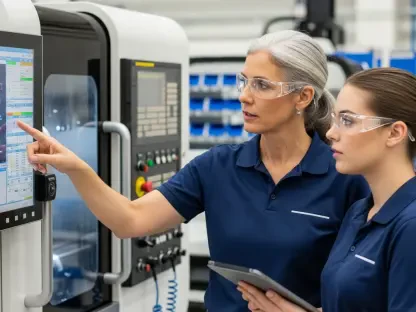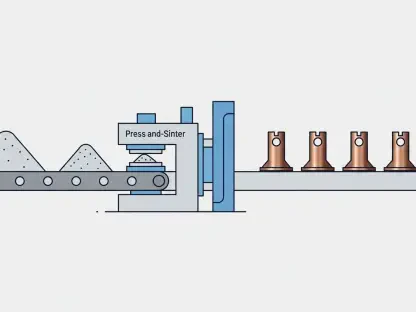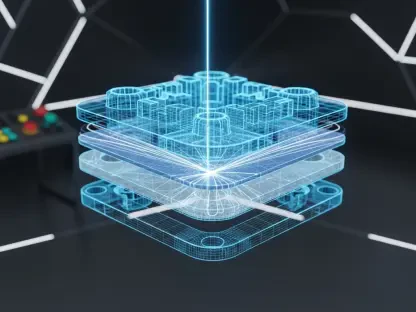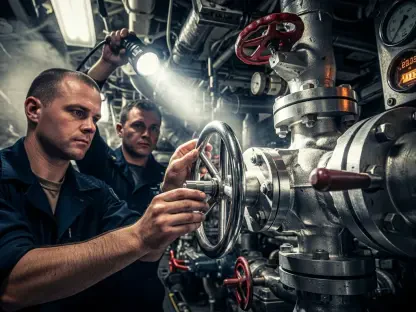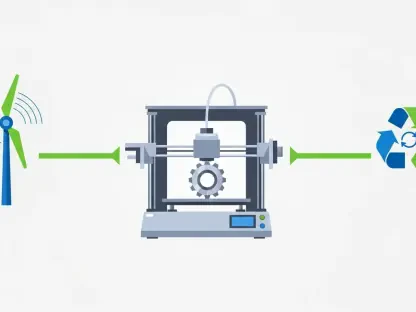In a world where aerospace innovation is becoming increasingly vital to global security and economic growth, India and Italy have emerged as unexpected yet powerful partners, blending their unique strengths to tackle the challenges of a rapidly evolving industry. With global supply chains shifting and the demand for cutting-edge technologies soaring, these two nations are forging a collaboration that could redefine the future of aerospace and defense. Their partnership came into sharp focus during a pivotal networking session held on September 26 at the Embassy of Italy in New Delhi, where stakeholders from both countries gathered to explore synergies in manufacturing, technology, and policy. This alliance is not just a bilateral effort but a strategic response to the complexities of modern aerospace demands, aiming to create solutions that resonate on a worldwide scale. By combining Italy’s storied expertise in precision engineering with India’s digital capabilities and expansive market potential, this collaboration promises to set new benchmarks, driving innovation at a time when adaptability is paramount.
Forging Industrial Alliances
The foundation of the Indo-Italian aerospace partnership rests on a shared commitment to aligning industrial capacities through innovative development models. Italy’s long-standing reputation for engineering excellence, particularly through its specialized manufacturing clusters, provides a valuable blueprint for India’s burgeoning aerospace zones. During discussions at the recent networking event, Italian stakeholders highlighted how their historical cluster evolution—rooted in collaboration among small and medium enterprises (SMEs)—could inspire similar growth in India. These clusters have historically driven innovation by fostering localized expertise, a model that resonates with India’s ambitions to build robust industrial ecosystems. The potential for mutual learning is evident, as both nations recognize the importance of integrating global best practices with regional strengths to create a competitive edge in aerospace manufacturing on an international level.
Complementing Italy’s approach, India brings to the partnership an unparalleled scale, a vast talent pool, and proactive government policies designed to spur growth in high-tech sectors. Initiatives like Make in India have laid the groundwork for integrating foreign expertise with domestic capabilities, creating a fertile environment for collaboration. By adopting elements of Italy’s high-precision production framework, Indian industrial parks aim to enhance supply chain resilience and manufacturing quality. This synergy not only strengthens bilateral ties but also positions both countries as formidable contributors to global aerospace production networks. The emphasis on SME involvement ensures that innovation is not confined to large corporations but permeates through smaller entities, fostering a dynamic and inclusive industrial landscape that can adapt to shifting market demands with agility and efficiency.
Advancing Space Technology Together
One of the most exciting dimensions of the Indo-Italian partnership lies in its focus on pioneering advancements in space technology, particularly in satellite systems and downstream applications. Italy’s expertise in optical and radar imaging systems offers a powerful complement to India’s growing prowess in artificial intelligence (AI) and digital analytics. This combination opens up transformative possibilities for industries such as agriculture, disaster management, and urban planning, where accurate Earth observation data can drive impactful solutions. At the New Delhi session, representatives from both nations showcased how their integrated technologies could address pressing global challenges, from monitoring climate patterns to optimizing resource allocation. The collaborative push in this area underscores a mutual recognition of the strategic importance of space as a frontier for economic and societal progress.
Beyond immediate applications, the partnership is also setting its sights on the broader commercial potential of space data, often referred to as a critical economic resource in today’s digital age. By merging Italy’s hardware capabilities with India’s software-driven insights, the two countries aim to develop cost-effective space services that can compete on a global stage. This effort is not just about technological innovation but also about creating scalable models that can be exported to other regions, amplifying their impact. The focus on downstream applications highlights a forward-thinking approach, ensuring that space technology serves practical, real-world needs while positioning both nations as leaders in an increasingly competitive domain. As they navigate this complex field, the emphasis remains on building solutions that balance innovation with accessibility, paving the way for widespread adoption across diverse sectors.
Harmonizing Policies for Progress
A critical component of the Indo-Italian aerospace collaboration is the concerted effort to align regulatory frameworks and policies, ensuring seamless cooperation between public and private sectors. With India’s recent decision to open its space sector to non-governmental entities, a window of opportunity has emerged for Italian companies to engage in joint ventures and technology transfers. However, this progress is tempered by challenges in harmonizing procurement norms and safeguarding sensitive data, especially given the high-stakes nature of aerospace and defense projects. Discussions at the networking event underscored the need for transparent systems that can foster trust while enabling private sector innovation. This alignment is essential for creating a stable environment where collaborative efforts can thrive without being hindered by bureaucratic or legal discrepancies.
Equally important is the focus on data protection and compliance with international standards, which both nations view as non-negotiable in their partnership. The sensitive nature of geospatial information and defense technologies demands robust safeguards to prevent misuse and ensure accountability. Italian firms, eager to expand their footprint in emerging markets through India, are advocating for clear guidelines that facilitate technology sharing while maintaining security protocols. Meanwhile, Indian policymakers are working to streamline foreign investment processes, making it easier for such collaborations to take root. Addressing these regulatory hurdles is not merely a procedural step but a strategic imperative that will determine the long-term success of this alliance. By prioritizing policy coherence, both countries aim to build a foundation of trust that can support ambitious joint projects over the coming years.
Charting a Global Course
Strategically, the Indo-Italian partnership transcends bilateral benefits, aiming to carve out a significant role in the global aerospace market through co-creation and shared ambition. For Italy, India represents not only a vast production hub but also a dynamic market for advanced aerospace solutions, ripe with potential for scaling operations. Conversely, India seeks to leverage this collaboration to access niche technologies and design expertise, accelerating its transition from a manufacturing-centric economy to a design-led aerospace powerhouse. This mutual vision was a recurring theme at the New Delhi event, where stakeholders emphasized the importance of combining strengths to address global demands. With defense budgets expanding and policy reforms easing foreign investment in India, the stage is set for both nations to make a lasting imprint on the international aerospace landscape.
Looking beyond immediate gains, the partnership reflects a broader aspiration to redefine how countries collaborate in high-tech sectors amidst shifting global supply chains. Italy’s precision engineering paired with India’s digital depth creates a unique synergy that can yield innovative, cost-competitive solutions for worldwide markets. This strategic alignment also positions both nations to tap into emerging opportunities in regions like Southeast Asia and Africa, where demand for aerospace technologies is on the rise. By focusing on co-creation rather than competition, the alliance sets a precedent for how international cooperation can drive progress in complex industries. The momentum built through this collaboration signals a commitment to not just meeting current needs but also anticipating future challenges, ensuring that both countries remain at the forefront of aerospace innovation for years to come.
Reflecting on a Milestone Partnership
Looking back, the Indo-Italian aerospace collaboration, crystallized during the networking session in New Delhi, marked a defining moment in bilateral relations, showcasing a shared resolve to harness opportunities in a dynamic global landscape. The event brought to light how Italy’s engineering mastery blended with India’s digital capabilities and market scale to lay the groundwork for groundbreaking advancements. This partnership transcended mere agreements, embodying a joint effort to address real-world challenges through innovation in manufacturing and space technology. It also highlighted the critical role of regulatory alignment in sustaining such ambitious endeavors, ensuring that trust and accountability underpinned every step forward. As both nations reflected on their achievements, the focus shifted to actionable next steps—deepening policy coordination, expanding joint ventures, and targeting untapped markets. Their combined efforts set a powerful example for international collaboration, suggesting that future initiatives could build on this foundation to tackle even broader challenges in the aerospace domain.


